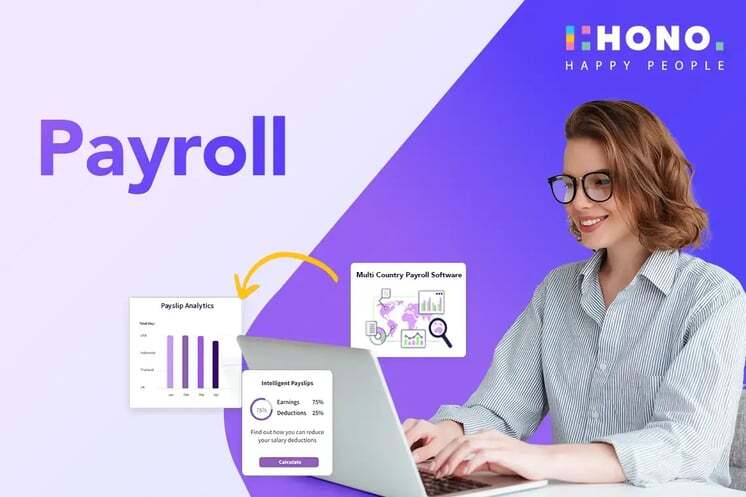Undoubtedly, the way we work has undergone a significant transformation. More and more individuals are embracing remote work, breaking free from the traditional office setup. Whether working from the comfort of home or any other location, this shift has redefined the concept of the workplace, making flexibility a cornerstone of modern work culture. With this widespread shift to remote work, the challenge of managing leave and attendance has taken center stage. As teams operate across different cities and time zones, traditional methods of tracking attendance and leave fall short.
The Future of Remote Work: Managing Leave and Attendance
5 mins

Here's where the spotlight falls on innovative solutions – remote work managing software. These digital tools are tailored to meet the unique demands of the contemporary workplace, ensuring seamless leave and attendance management. In this blog, let’s take a look into the crucial role played by these software solutions in processing remote work smoothly. Through this blog, let’s take a look into remote work managing software and leave and attendance management in remote work.
Challenges in Remote Leave and Attendance Management
Handling leaves and attendance for remote teams poses unique challenges. Traditional methods struggle to cope with the dispersed nature of remote work. Coordinating leave and accurately tracking attendance become complex when employees aren't physically present. Remote work managing software, a tailored solution to tackle these challenges head-on, ensuring that leave and attendance management seamlessly aligns with the dynamics of remote work.
The Role of Technology in Remote Leave and Attendance Management
Managing leave and attendance for remote teams is greatly assisted by technology. Remote work management software becomes crucial, providing a digital system that streamlines and improves the entire process. It enhances efficiency by automating leave requests, offering real-time attendance data, and enabling better communication between employees and management. Incorporating technology into leave and attendance management isn't just convenient; it's a strategic step to optimize workflows and promote a more connected and responsive remote work environment.
Also Read: Solving HR Challenges: Leave and Attendance Management Solutions
Key Features of Remote Workforce Management Tools
1. Automated Leave Requests: Streamline the process of requesting time off with easy-to-use automation, simplifying the leave application for employees.
2. Real-Time Attendance Tracking: Gain instant visibility into employee attendance, promoting accountability and allowing for swift responses to attendance-related matters.
3. Customizable Workflows: Tailor workflows to fit the unique needs of your organization, ensuring that leave and attendance management aligns seamlessly with your operational processes.
4. Centralized Reporting: Access comprehensive reports in one centralized platform, providing valuable insights into attendance patterns, helping in strategic decision-making.
5. Adaptability to Diverse Schedules: Accommodate varying work schedules effortlessly, allowing for flexibility in managing attendance without compromising accuracy.
6. User-Friendly Interface: Ensure ease of use for both employees and managers, fostering a positive user experience and minimizing the learning curve for the adoption of workforce management tools.
Ensuring Data Security and Privacy in Remote Work Management
Organizations are increasingly using software to manage sensitive leave and attendance data as they adopt remote work. It's crucial to prioritize robust data security and privacy. These tools focus on encryption, secure access protocols and adherence to privacy regulations. By doing this, they build confidence among both employees and management, ensuring that personal and attendance-related information is protected from potential threats.
The shift to remote work necessitates a re-evaluation and adaptation of existing attendance and leave policies. Remote work managing software like HONO helps organizations to create policies that align with the flexibility demanded by remote setups. This includes tailoring leave approval processes, accommodating different time zones, and building a culture of trust and responsibility among remote employees.
Training and Onboarding for Remote Work Management Tools
Introducing remote work managing software into the organizational toolkit requires effective training and onboarding strategies. Employees and management alike need to be familiar with the features and functionalities of these tools to harness their full potential. Training programs play an important role in ensuring a smooth transition, enhancing user confidence and maximizing the benefits of remote work management tools.
The introduction of new technologies, including remote work managing software, can sometimes face resistance. Overcoming this resistance involves addressing concerns, communicating the benefits, and showcasing how these tools simplify rather than complicate work processes. Strategies for fostering a positive attitude toward change are crucial, emphasizing the collaborative and empowering nature of these digital solutions in improving the overall remote work experience.
The challenges and opportunities presented by remote leave and attendance management are reshaping the way organizations approach workforce management. Technology, with its innovative solutions, stands as a need for efficiency and precision in remote work environments. By adapting policies, ensuring data security and overcoming resistance to change, organizations can harness the full potential of remote work management tools. This comprehensive exploration sets the stage for a future where remote work is not just a trend but a sustainable and optimized way of conducting business.
Frequently Asked Questions
HCM software automates and streamlines HR processes, making them more efficient and accurate. It provides a centralized platform for managing employee data, tracking performance, facilitating talent acquisition, and improving employee engagement. By leveraging HR management software, organizations can save time, reduce administrative burdens, make data-driven decisions, and enhance overall HR operations.
AI-driven HONO is considered the best HR software due to its innovative use of Artificial Intelligence (AI) to streamline and enhance HR processes. Here’s why. It provides actionable, data-driven insights that enable HR professionals to make informed decisions, improving overall organizational effectiveness and strategic planning. HONO automates repetitive and time-consuming HR tasks, allowing HR personnel to focus on more strategic activities, thereby increasing overall productivity and efficiency. HONO is scalable and adaptable, catering to the evolving needs of organizations, regardless of their size or industry.
Choosing the right Employee Management Software involves considering several factors to ensure it meets the organization’s needs. Here’s a guide to help you choose. Clearly define what you need the HRMS software to achieve, considering aspects like attendance tracking, performance management, and employee development. Determine a budget considering both the initial cost and ongoing expenses like subscription fees, updates, and support. Ensure the HCM software integrates seamlessly with other systems and tools used in your organization, such as payroll and attendance systems. Opt for cloud HCM with an intuitive and user-friendly interface to ensure ease of use for both HR personnel and employees. Assess the human capital management solution's security features and its ability to comply with relevant laws and regulations to protect sensitive employee data. By considering the above factors and conducting thorough research, you can select an Employee Management Software that aligns with your organizational goals and enhances overall workforce management.
.png?width=70&height=70&name=Team%20HONO%20logo-01%20(1).png)
Team HONO








.jpg)
